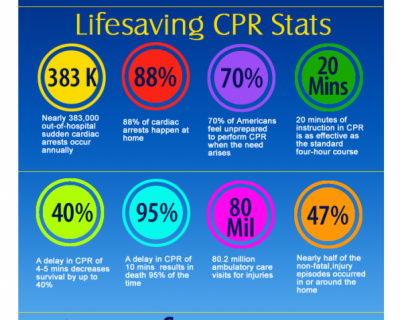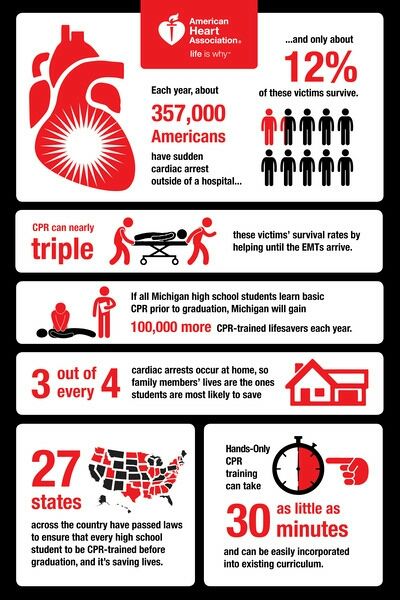what is an effective chest compression
What are the characteristics of effective chest compressions. Death can happen in minutes without treatment.

Anaesthesia Today Aha Cpr Guidelines 2010 Pediatric Nursing Nursing Mnemonics Nursing School Tips
For healthcare providers and those trained.

. Conventional CPR using chest compressions and mouth-to-mouth breathing at a ratio of 302 compressions-to-breaths. Rescue breathing is delivered between chest compressions using a fixed ratio such as two breaths to 30 compressions or can be delivered asynchronously without interrupting chest compression. Delivery of chest compressions.
What type of care do you give to a conscious infant that. Chest compressions are to be delivered at a rate of at least 100. In this process they should allow complete rise of the chest after the.
Note the overlapping hands placed on the center of the sternum with the rescuers arms extended. Following 30 compressions open the airway and deliver 2 effective rescue breaths. European Resuscitation Council ERC guidelines for resuscitation recommend that CPR providers should implement at least 5 cm but not exceeding 6 cm deep chest compressions Nolan et al 2010.
Being said theres a right way and a wrong way to perform chest compressions. In order to optimize blood flow excellent chest compression technique is critical. Its important to remember that when chest compressions are interrupted blood flow stops.
The guidelines recommend that rescuers push hard and fast at a rate of about 100 compressions per minute for all victims except newborns. After every 30 chest compressions give 2 rescue breaths. Studies show that to have effective chest compressions the person performing CPR should push down at least 2 inches deep.
Cardiopulmonary resuscitation CPR is a lifesaving technique thats useful in many emergencies such as a heart attack or near drowning in which someones breathing or heartbeat has stopped. 3Follow the prompts to upload the files you need to convert. For children compress the chest 4-5cm 30 times at a rate of 100-120 compressions per minute.
If you are currently or considering a career in the medical field a deep fundamental understanding of how to properly administer chest compressions is. Studies show that applying continuous chest compressions is critical for survival and interrupting them for rescue breathing might increase risk of death. During cardiac arrest the heart cannot pump blood to the rest of the body including the brain and lungs.
Chest compressions have saved the lives of countless patients in cardiac arrest as they generate a small but critical amount of blood flow to the heart and brain. For adults compress the chest to a maximum depth of 5-6cm 30 times at a rate of 100-120 compressions per minute. The device is embedded with two sensors one to measure force and one to measure acceleration.
Effective chest compressions produce blood flow during CPR To give effective chest compressions all rescuers should push hard and push fast Compress the chest at a rate of about 100 compressions per minute for all victims except newborns-. Cardiac arrest is not the same as a heart attack. The proper ratio of compressions to rescue breaths ratio is 302 if you are CPR certified.
The findings observed in the current study. 1 CPR uses chest compressions to mimic how the heart pumps. After the conversion is complete you will see the conversion success message and you can download your.
1Find the correct Effective chest compressions quizlet link from the list of answers below. Allow the chest to return to its normal position. Effective chest compressions are the most important component of Cardiopulmonary Resuscitation CPR.
This is achieved by direct cardiac massage as well as a thoracic pump mechanism. In adult victims of cardiac arrest it is reasonable for rescuers to perform chest compressions at a rate of 100 to 120min and to a depth of at least 2 inches 5 cm for an average adult. Theres significant emphasis on the delivery of effective chest compressions.
If youre not certified and you arent sure how to provide rescue breaths stick to hands-only CPR. Effective chest compressions are in helping someone survive cardiac arrest. Tilt the persons head gently and lift the chin up with 2 fingers.
Allow the chest to rise to its normal position done at a rate of about 100 per minute given smooth regular and straight up and down. The American Heart Association recommends starting. High-quality CPR involves rescuers being aware of how to deliver effective chest compressions to a victim in order.
Effective chest compression is one of the determinants of blood flow to vital organs during CPR. Use both your arm strength and the strength of your upper body to do effective chest compressions. 2Make sure you are connected to the correct website find the converter you need.
These compressions help keep blood flowing throughout the body. The CPRmeter developed by Laerdal Medical is a device used both for practicing chest compressions and for administering them to actual cardiac arrest victims. Place the heel of your hand on the centre of the persons chest then place the palm of your other hand on top and press down by 5 to 6cm 2 to 25 inches at a steady rate of 100 to 120 compressions a minute.
Are delivered fast about 100 compressions per minute Care for person who is unconscious and has a blocked airway includes. Effective chest compressions Are smooth regular and give straight up and down.

New Cpr Guidelines Time Chest Compressions To Stayin Alive By The Bee Gees Save A Life Cpr Training American Heart Association First Aid Cpr

Health Infographics Only Infographic Health Cpr Training Cpr

Learn Cpr And Save A Life Read This Hands Only Cpr Guide Learn Cpr Health And Nutrition Health And Wellness

Pin By Jacqueline Alvarez On I Want To Learn How To First Aid For Kids American Heart Association Cpr Training

Hands Only Cpr Everyone Can Save A Life Nurse Life Life Awareness

Free First Aid Flashcards Available To Download From Firstaidforfree Com Content Based Upon Our New First Aid Pocket Guide Flashcards First Aid First Aid Tips

Continuous Chest Compression Cpr Medical Knowledge Cpr Training Cpr

Learn How To Conduct Cpr On A Child Child Cpr First Aid Poster First Aid For Kids

Know It All How To Do Cpr How To Perform Cpr Reference Cards

Learn How To Save A Life Using Hands Only Cpr With These 3 Steps Cpr Cpr Training Life

Hands Free Cpr Is Just As Effective As Traditional Cpr With Rescue Breathing You Should Push Down At Least 2 Inches Wh Cpr How To Perform Cpr Cardiac Event

Facts About Cpr Cpr Training Cpr Teaching

Simulaids Econo Vta Cpr Trainer Worldpoint In 2021 Cpr Cpr Training Healthcare Training

The Life Saving Technique Cpr Is Quite Easy To Learn Even The General Public Should Learn Cpr So That They Can Use Saving Lives How To Perform Cpr Learn Cpr

Hands Only Cpr Can Increase The Chances Of Survival Of The Victim By Providing Only High Quality Chest Compression Without Interr Cpr Safety Training Learning

New Cardiopulmopnary Resuscitation Cpr C A B Basic Life Support American Heart Association Emergency Response System


